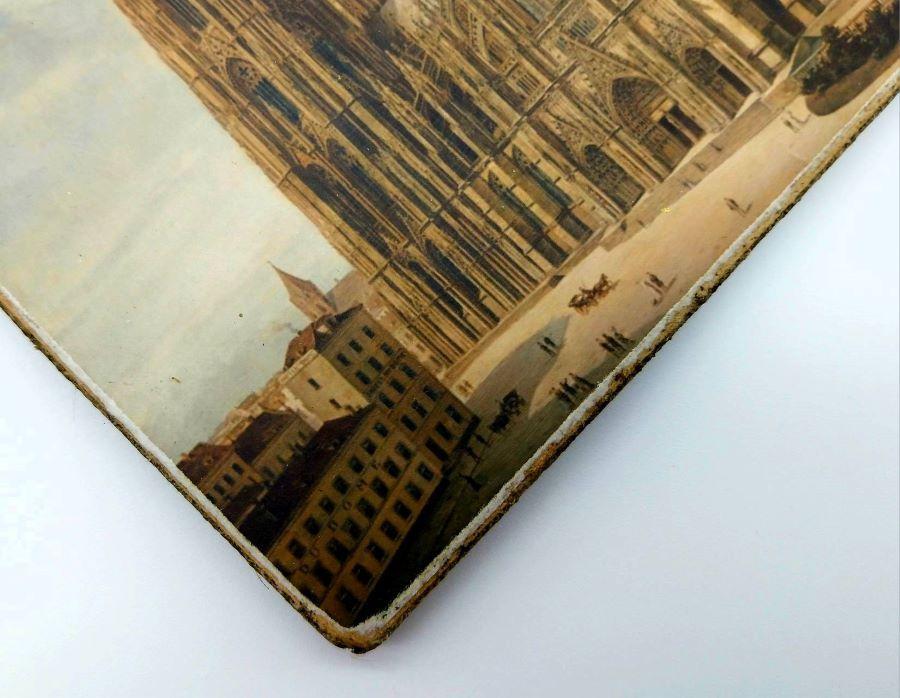Integer vel turpis ultricies, lacinia ligula id, lobortis augue. Vivamus porttitor dui id dictum efficitur. Phasellus vel interdum elit.
Carl Georg Hasenpflug "Ideal view of Cologne Cathedral from the southwest" 1834-1836
12.00 €
No: 523514
Reproduction. Professional handwork. Wood-based print. Original author's technologies were used in its production. 12.0x15.0x1.0 cm. A very strange painting: the architectural painter Carl Georg Hasenpflug made it on commission from a relative of the Archbishop of Cologne. It shows a particularly magnificent view of Cologne Cathedral. The painter worked on the almost two-meter-high painting for two years. In the evening light, the west facade of the cathedral with its two towers rises monumentally before our eyes. The people and the other buildings are tiny - the cathedral is all the more gigantic. But when Hasenpflug finished the painting in 1836, nothing of it could be seen. The cathedral was unfinished. Only the right tower was half finished. On it is still the medieval crane: the symbol of Cologne. In 1814, Joseph Görres demanded that the cathedral be completed as a monument to the Germans. At the same time, Sulpiz Boisserée found the medieval blueprint for the cathedral façade - one half in Paris, the other in an attic in Darmstadt. Boisserée had this view engraved in copper. Only now was it possible to complete the cathedral according to the old plans. But this did not begin until 1842. When Hasenpflug painted the completed cathedral, Boisserée's research and copper engravings served as a model. His painting is a beautiful and pious vision of the future. And at the same time of the past, the glorified German Middle Ages. The other buildings in his picture are all medieval. And the people's costumes also date from the 16th century. This also applies to the building with the battlements on the left edge of the picture. In 1836, the Kölner Hof was still located there in Trankgasse. This is where the first Cologne museum showed Wallraf's art collections. In reality, it is a dilapidated house from the 18th century. But in Hasenpflug's painting, it is a magnificent medieval building. Just as a new building for the museum is planned there: in neo-Gothic and neo-Romanesque style. This is also a pious vision of the painter. The first Wallraf-Richartz Museum is built elsewhere. In 1913, the Deichmannhaus is built in Trankgasse next to the cathedral. Anyone who stops by the "Gaffel am Dom" today may remember, with a Kölsch and Flönz, that the first Cologne museum once stood right here. The cathedral, however, is completed in 1880 - very similar to how Hasenpflug painted it.
2 left on stock



